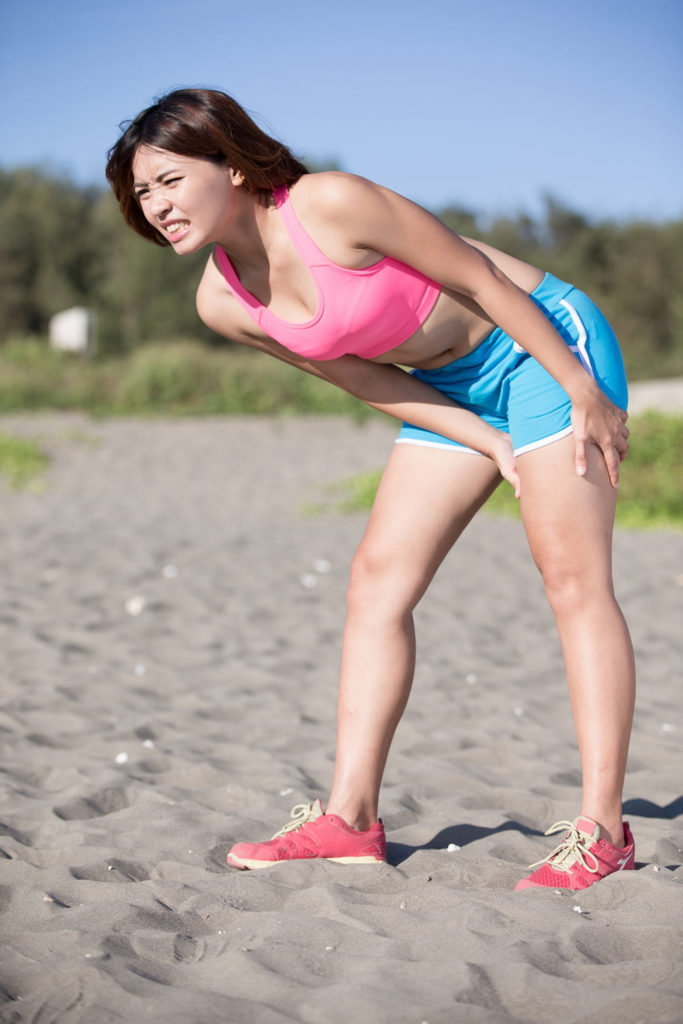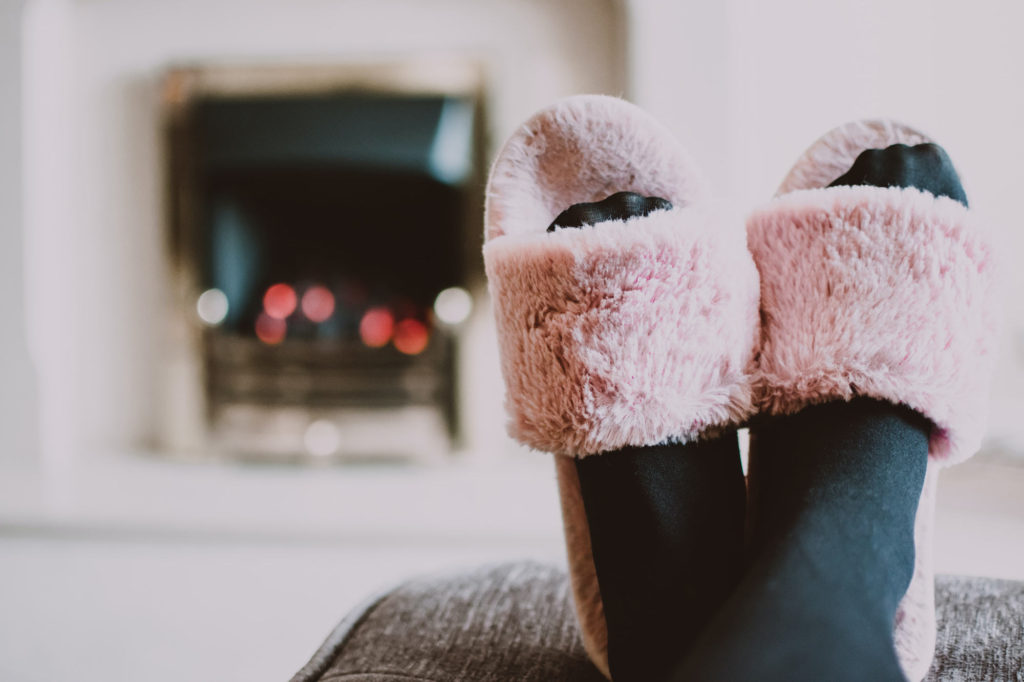
While it sounds painful, if you continue to work out while sore, it might be the best remedy for your pain—and your fitness plan.
If you’ve ever started a new fitness routine, you might have jumped eagerly, only to realize that soreness gets the better of you. I remember when I started jumping into fitness back in 2011. I had found Zuzana Light (then of Bodyrock, but now she has her own site) and I was all in. The workouts were fast, short, hard, varied and required focus, which helps my easily bored brain.
But after a couple of days, I woke up stiff-legged and in utter pain.
I wasn’t a stranger to this feeling, or to working through it. I played field hockey in high school and felt this for about a week every year once we started pre-season. It was intense, with three to five hours a day of practice. I have distinct memories of feeling every step as I walked from class to class, and how walking down stairs was a hundred times worse than going up.
And once practice began again, it hurt for about ten minutes, and then let up once the muscles warmed up.
Because of this, I’ve always been in the “work through the pain” camp (with reason). It’s hard, though, and it’s really easy to convince yourself to just take (another) day off. But if you continue, then by the time you’re ready for another workout, you might have let too much time lapse. This denies you of the consistency needed for proper progression and growth.
What is muscle soreness?

Muscle soreness—or Delayed Onset Muscle Soreness (DOMS)—is a condition that begins anywhere from six to 24 hours after you work out and peaks about one to three days later. The sore muscles are tender to the touch, and it might limit movement or make it more painful, especially when starting movement from a resting position.
Muscle soreness is not the same as pulling a muscle, or any type of muscular injury. I’ll touch on that later.
Soreness does not indicate a great workout.
Yeah, I know. It can make you feel like a badass when you work out like a beast and wake up the next morning to find your muscles are sore. But just because you’re in pain doesn’t mean you got a good workout.
I mean, I’ve gotten sore carrying moderately heavy groceries home.
While muscle soreness is a signal that your muscles are being exercised in new ways, the absence of soreness doesn’t mean you’re not making gains.
Myths around muscle soreness.
When you put muscles under stress, you essentially damage the muscle. The body then repairs the damages, fusing the fibers into slightly bigger, thicker muscle fibers. When the rate of repair is greater than the rate of damage, then you get muscle hypertrophy, or growth.
And if you’re thinking, “I don’t want muscle growth!” then I’m here to tell you, yes, you do. Check out my post on why strength training is your friend. If you’re a woman especially, you have nothing to fear from it (in fact, you’ll see your weight loss and/or slimming goals reached faster with strength training).
A big myth is that sore muscles after you work out indicate the muscle damage needed for muscle growth. Mmm, yes and no.
Muscle soreness happens when the muscle is being used in new or different ways. However, the muscle can still be damaged, and subsequently repaired, without any soreness at all.
It’s like how all sea gulls are birds, but not all birds are sea gulls (kinda).
Furthermore, the degree of soreness doesn’t necessarily correspond to the degree of damage. Different types of movement cause more soreness than others. Eccentric muscle contraction seems to cause the most soreness. These are movements where the muscle lengthens as it contracts, such as running downhill, lowering weights, or, ahem, lowering groceries to the floor.
Other common myths around DOMS are that it’s caused by lactic acid buildup (yes, it feels like acid, but this is also untrue), that stretching helps alleviate or prevent it (it doesn’t, though it makes it feel better for a moment), or that this signals some kind of injury and requires you to rest until it’s gone.
All BS.
Resting is necessary, but don’t use it as an excuse.

Remember how muscle has to break down and then repair itself? The breaking down occurs during the workout, and the repairing happens in the days after, i.e., during rest.
The rule of thumb is that you typically need at least a full day’s rest on a muscle group after an intense workout. However, if you’re new to exercise, you might want more. If you’re experienced, you honestly might not even any. It’s a controversial topic, and there are plenty of people saying one thing versus another.
Keep in mind, too, that a rest day from upper body doesn’t mean a rest day overall. If you alternate upper and lower body workouts, for instance, you’re getting in rest days on each body part. You can also do active rest, which requires some light activity or movement, but not a full-blown workout.
Figure out what works for you, but be wary of overtraining. If you start feeling like you just never want to work out, and your body feels brittle or just fatigued, take a day or more off.
So yes, I believe some rest is necessary, but muscle soreness is not necessarily a signal that you’ve overtrained or deserve a week off from the gym.
Continuing to work out is not only possible while sore, it can help the muscles feel better.

If you’re still sore after taking the necessary rest, the best remedy is to continue to work out or continue movement, though the degree of difficulty should be up to you.
Ease into your workout with a nice warmup. After about ten minutes when the muscles warm up, you should feel a drastic drop in pain. If this is the case, and you can continue your exercises as usual without compromising form, continue as usual.
If you feel tentative about adding weights, you might want to try a nice bodyweight workout. While bodyweight exercises can certainly be strenuous, they tend to have a more gradual increase to reach fatigue, and therefore you should be stressing the muscles less overall.
If pain doesn’t diminish enough with a warmup, or if your spidey sense is telling you this is not a good idea (listen to your body!), take an active rest day. Walk, hike, do a non-vigorous yoga routine, or something similar. Keep your body moving to prevent stiffness, but don’t engage in anything that will continuously contract or strain the muscles.
As long as you’re not injured, my experience is that movement, even a full-blown workout, can make the soreness itself severely diminish. Keep in mind that that’s my experience, not necessarily a studied scientific opinion. Also, this is all assuming you are not injured.
Know the difference between muscle soreness and injury.
If you think in any way you have pulled or otherwise injured a muscle or joint, stay off of it completely until it’s healed.
It can be difficult to know the difference if you’re still getting used to how your body handles recovery, but an injury:
- will be felt during or shortly after the exercise.
- will worsen with further movement.
- won’t disappear after a few days.
- might be more of a sharp or distinct pain.
- will be in a localized area.
Muscle soreness is the opposite: It pops up usually a day or two after the exercise, feels better with movement, diminishes after three days or less, is more of a tenderness and general pain and over a larger area.
Depending on the degree of injury, you might need to rest anywhere from a few days to a few months (sucks, I know). But resting now means less injury later.
Conclusion.
So, can you work out while sore? Yes! Absolutely! As long as your muscle pain is muscle soreness, and isn’t compromising your ability to move once you’ve warmed up, it should be safe to continue working out. You can always take a safer route by dropping weight somewhat or entirely if it starts to feel painful or you’re unsure. With time, you’ll come to understand your body and what the various signals mean.
But regardless, keep moving!
